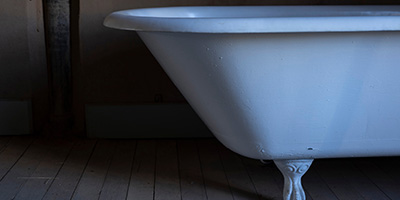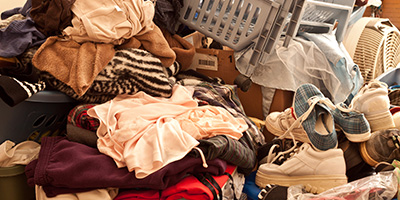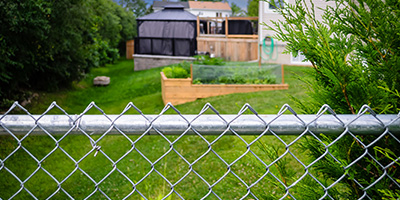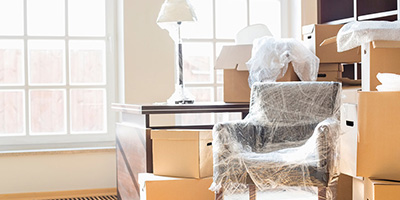A Beginner’s Guide to Swedish Death Cleaning
Lessen the load on loved ones before you pass with the Swedish idea of döstädning.

How to Do Swedish Death Cleaning
Swedish death cleaning isn’t as morbid as it sounds. In fact, it’s a lifestyle that revolves around letting go of your junk using the simple question, “Will anyone be happier if I save this?”
We spoke with two certified professional organizers, Jody Adams from In Its Place and Judi Igwe from Rescue My Space, who have helped clients through the process of Swedish death cleaning, and Liane Carter, a writer from Next Tribe who went through and wrote about the process herself, to get a better understanding of this experience.
What Is Swedish Death Cleaning?
The name “Swedish death cleaning” is a little jarring, but by definition, it’s a sensible way to approach your belongings as you enter the later years of your life. Think of it as minimalism for seniors – but you’ll find it’s something you can do at any age.
The practice arises from Swedish author Margareta Magnusson in her book The Gentle Art of Swedish Death Cleaning: How to Free Yourself and Your Family From a Lifetime of Clutter. She explains the notion of döstädning, which translates to “death cleaning.” The idea is to declutter your life before you die to release the burden from the loved ones you leave behind.

“It’s a loving thing to do for the people you care about. Sorting through your belongings once you’re gone is an awful burden to put on someone, so get rid of them now to make it less awful for them.”
Swedish Death Cleaning in 7 Steps
Magnusson believes the Swedish death cleaning method of living with less by gifting away will help you live a happier life. It may not be easy, it may even get emotional, but in the end, you’ll likely feel like it was worth it. Here’s how to begin downsizing and live a simpler life.
How to Do Swedish Death Cleaning [Infographic]


Step 1: Let Your Loved Ones Know
An important part of Swedish death cleaning is involving the people close to you. Not only will this keep you accountable, but it also gives you the opportunity to share memories with the people you love.

“Look at it from a positive place. Share your experiences, family history and stories that you might not have otherwise shared with your children and grandchildren. This process can help bring these memories to life.”
With family and friends around, they can help you clear things out, move heavy pieces you wouldn’t be able to alone and even note which of your belongings they might like to keep, either now or once you’re ready to part with them.

Step 2: Start With Less Personal Items
Magnusson says that closet organization is a good jumping-off point because it’s easy to find clothing or accessories you no longer wear to put in the “give away” pile. It’ll help build momentum as you move on to other areas of the house, and eventually to more sentimental items like photos and letters that may be harder to part with.
Carter said she made the process fun by inviting a friend over, opening a bottle of wine, and getting her opinion on the clothes or items she was unsure about. “If you’re having a hard time, have your friend hold up an item and then give a quick yes or no without thinking,” she said. “The less you dwell, the easier it is.”
However, this may not be the case for everyone. Swedish death cleaning isn’t a one-size-fits-all approach. What you get rid of or keep is dependent on your comfort level, your needs and lifestyle, who you may be saving things for, and how much space you have in your house.

“Make sure to only have around you what fits in your life now. Clothing and books are easy things to get rid of. If you’re in a transition phase, like going from working to retired life, clear out all of your work clothes. Things that are in multiples like kitchen utensils and gadgets can be paired down.”

Step 3: Gift Possessions Away Gradually
No longer use your good china? Give it to your daughter (but only if she wants it!) the next time she visits. Have you stopped using your special tablecloth because you don’t host holidays anymore? Send it to someone who always complimented it.
Gift things away thoughtfully and intentionally. These items are important to you, so make sure to give them to people who will care for and cherish them the way that you do.

Step 4: Keep Mementos for Yourself
“You’re parting ways with items that no longer serve you, but because you’ve had these things for many years and there’s sentimental value to them, it can be hard to let go,” Igwe said.
Swedish death cleaning can be an emotional process. When you’re deciding what’s worth keeping, ask yourself what it means to you. It’s okay to want to keep old love letters, yearbooks and other personal items if you can definitively say why it’s significant. But just because they’re sentimental to you, doesn’t mean they will be to others. Keep them in a box marked “throw away” to be tossed when you’re no longer around to appreciate them.

Pro Tip
Digitize old photos to make them more manageable and easier to pass on to everyone in the family. If you don’t recognize the people in your pictures, just get rid of them.

Step 5: Donate and Sell the Rest
“Once you’ve made piles of things to get rid of, get it out of your house as fast as you can. Otherwise, you may double back,” Carter said.
If you’re not keeping it and you can’t find anyone else to take it off of your hands, don’t let it sit in your garage for another decade. Try one of the following donation options:
Item | /////Donation Organization |
|---|---|
Clothes and Household Items | |
Prom, Bridesmaid and Special Occasion Dresses | |
Old Towels | Humane Societies and Animal Shelters |
Furniture | |
Cars | Vietnam Veterans of America |

Keep in Mind
If you think something is valuable, look it up before you give it away to see if it’s worth selling instead. Host a garage sale, or use an online resource like eBay, OfferUp, Craigslist or Facebook Marketplace.

Step 6: Make a List of Important Documents and Passwords
Not only is it a good idea to collect important documents and passwords for yourself, but it’s also imperative for your family. Make a hard copy of computer passwords, and put together important financial documents and other relevant paperwork that may be tough but important to find after your death.

Step 7: Declutter Regularly
Like we said, Swedish death cleaning isn’t morbid – it’s a way of living. And it’s also not just for those in the later years of their lives.
“Death cleaning is targeted towards older people, but it’s really for everyone,” Igwe said. “I always suggest decluttering. Let’s try to get rid of this stuff as we live, so that when we do go, we don’t burden anyone.”
Make decluttering a habit. If you notice you don’t use something often, keep a box or bag handy to build a running pile of give-away items. Reflect on the material things in your life and be truthful about what they mean to you. If you’re having a hard time, try to be objective. When was the last time you used this? Does it serve a purpose in your life? Once you’re gone, will this be burdensome to your family?

Expert Tip
In her book, Magnusson tells her readers not to forget about themselves through this process. It’s a difficult and emotional practice, so reward yourself – but not with more stuff. When you’ve decluttered an area of your home or life, treat yourself to a movie or a nice dinner.
Swedish Death Cleaning Tips for the Ambitious Declutterer
“My mother used to say, ‘Every time you bring something new into the house, you should get rid of an item,’” Carter said. As difficult as this may be, it’s good advice. Here are some other tips to help you maintain the principles of Swedish death cleaning.
Tip #1: Hand-Me-Downs Make Great Gifts
No matter what a gift is, if it’s given with meaning it will be appreciated. So, don’t be afraid to gift away something you own. Give a cherished book to a friend; it’s a meaningful present and helps you downsize. Vintage is trendy, and what’s more authentic than a brooch or shawl you wore back in the day?
If you view these as items that you’re giving away with purpose, you’ll be less likely to miss them and wish you had them back. You’ll associate getting rid of them with fondness, not regret.
Tip #2: Appreciate the Small Things
Learn to enjoy what you have; don’t long for what you don’t. As difficult as it may be, appreciate a little window shopping without actually purchasing the hat or dress that will bulk up the closet you just paired down.
Tip #3: Allow Yourself to Feel and Reflect
Like we said, this can be an intense experience. After all, this is your life. Do it with joy and let your things help you reflect on the wonderful years you’ve had. Be happy, be sad, and feel what you need to feel through this practice.
When Should You Start Swedish Death Cleaning?
Magnusson says you should begin Swedish death cleaning if you’re 65 or older, but as Igwe said, this process is really for anyone. The earlier you start the better because it’s really a lifestyle. You don’t need to jump in and do it all at once, but start going through a little bit at a time and maintain a more minimalist approach to life. It’s a great excuse to downsize and get rid of clutter.
Ready to start decluttering? Don’t get too hung up on the “death” part. Take the opportunity to free yourself of clutter and desire in order to live simply.
Expert Contributors

Jody Adams, M.A.
Jody is a Certified Professional Organizer® with a lifelong passion for clearing out, sorting, rearranging and organizing. Servicing many neighborhoods in the Pittsburgh area, her goal with In Its Place is to provide her clients with the support they need to develop a system for the items in their lives.
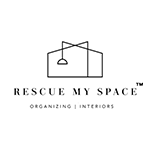
Judi Igwe
Judi originally started Rescue My Space to help friends and close friends to lessen anxiety by bringing a sense of organization to their homes. Growing up in a small, one-bedroom apartment in Houston, she knew first-hand the importance of giving every item a home and decluttering to improve the way your life functions.

Liane Carter
Liane is a contributing writer at Next Tribe, a travel and events company for women 45+ that believes in aging boldly a state of mind. The organization provides a safe spot for like-minded women experiencing life changes like empty nest syndrome. Based in New York City, Liane is a nationally-known writer, an advocate for the autism community and the author of an award-winning memoir, Ketchup is My Favorite Vegetable: A Family Grows Up With Autism.
What Do You Think?
Has Swedish death cleaning inspired you to live with less? We're listening. Head over to Twitter or Facebook,
and use #dumpstersblog to join the conversation.



